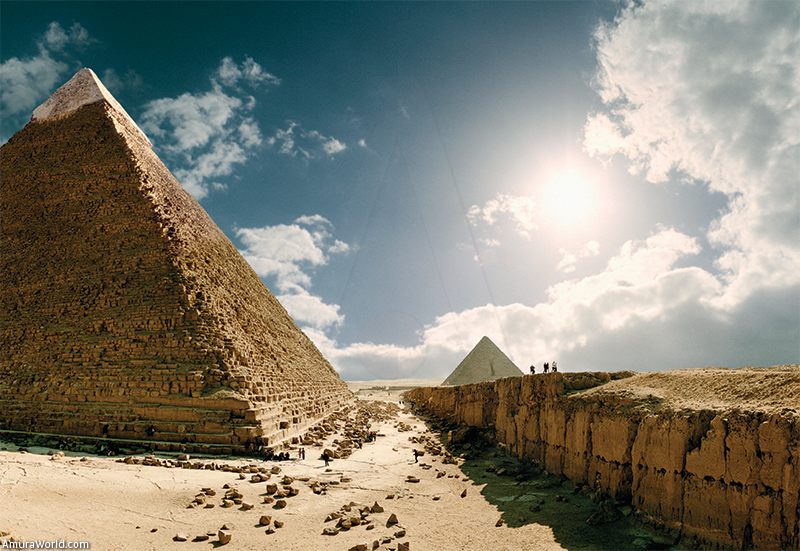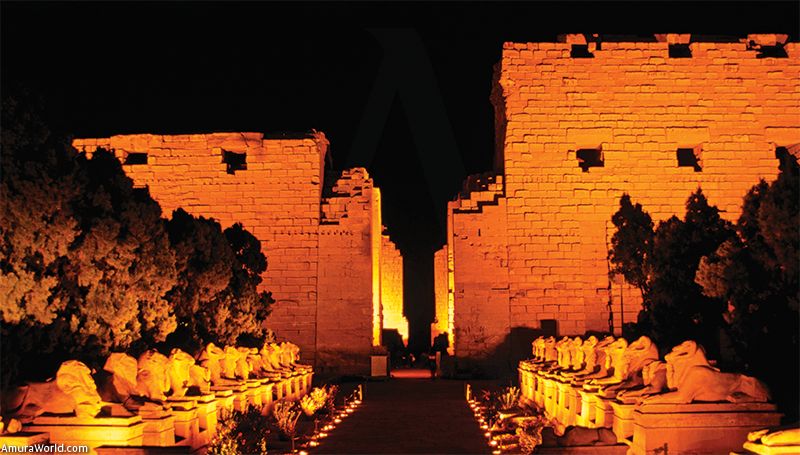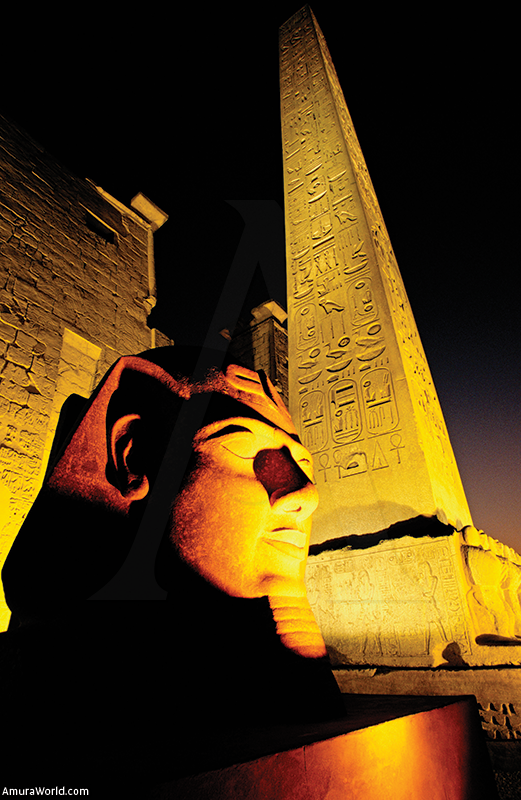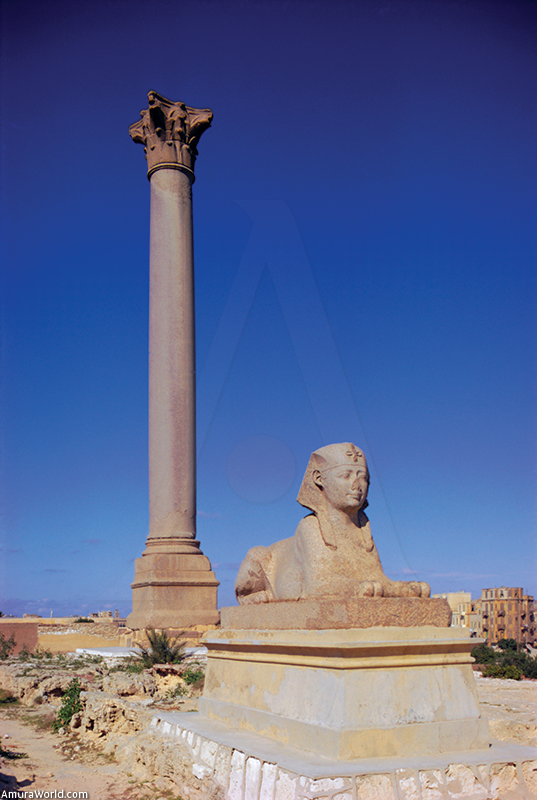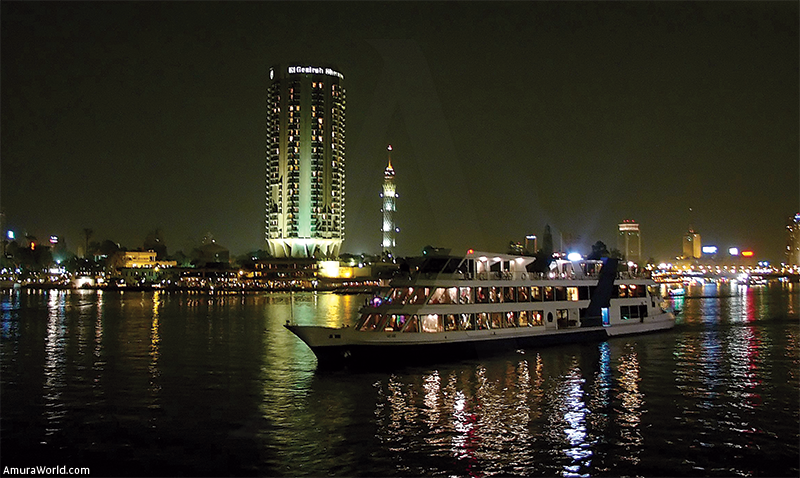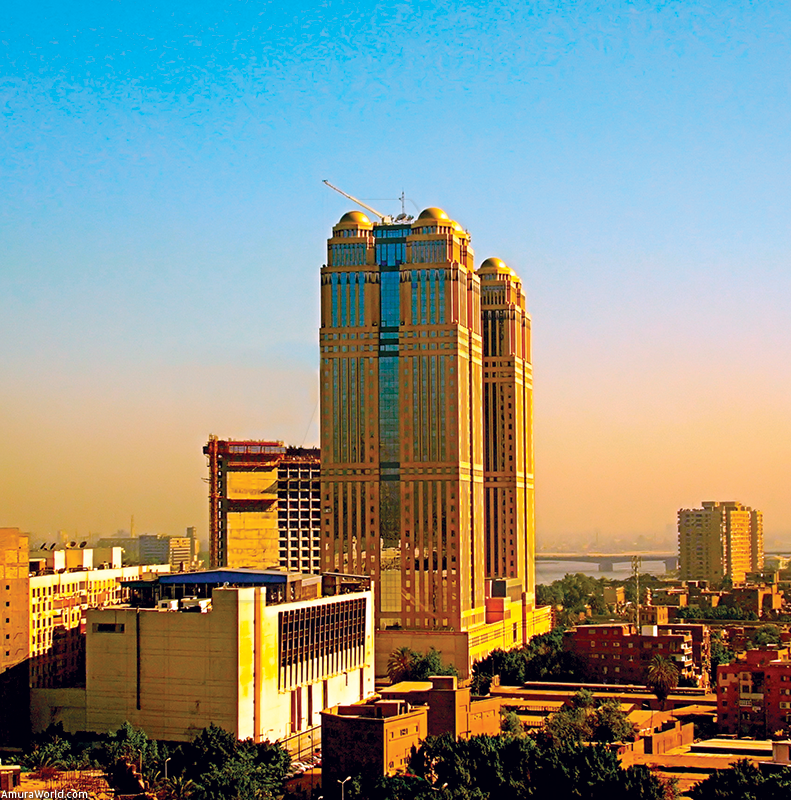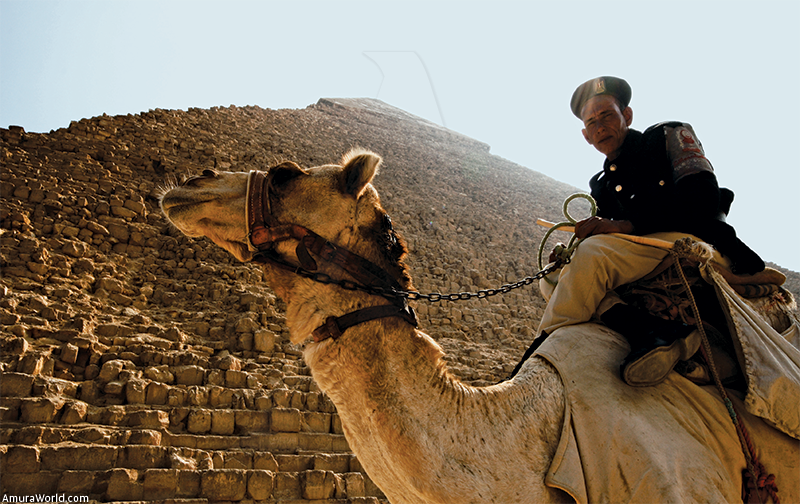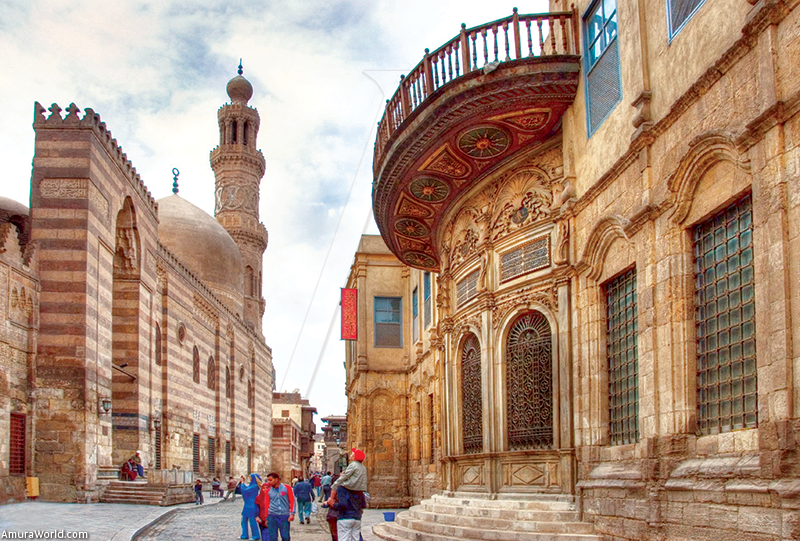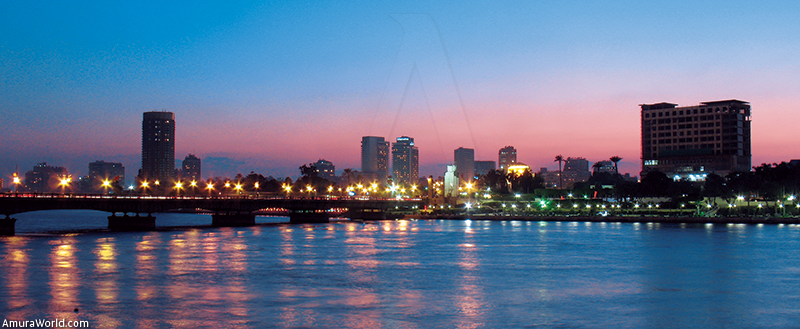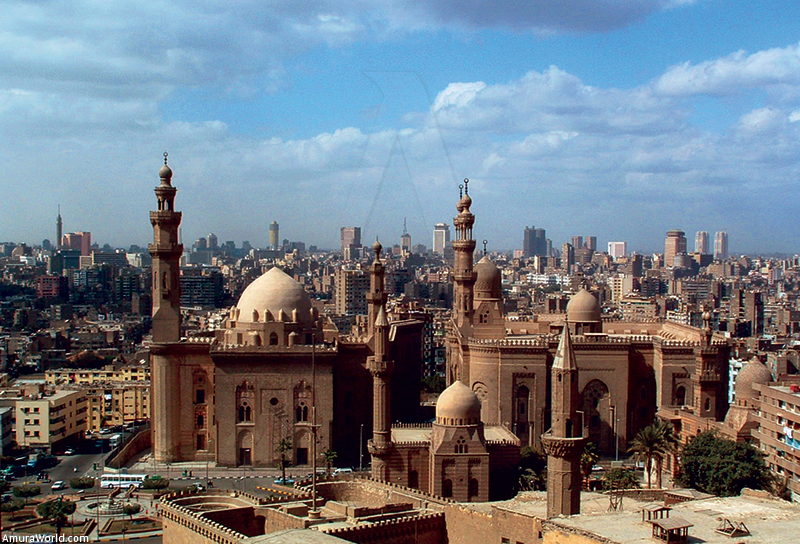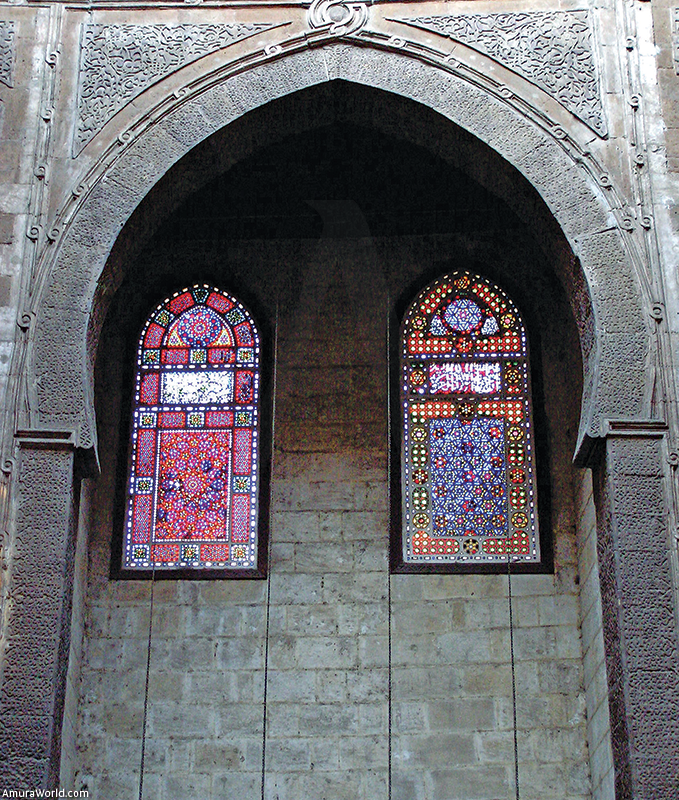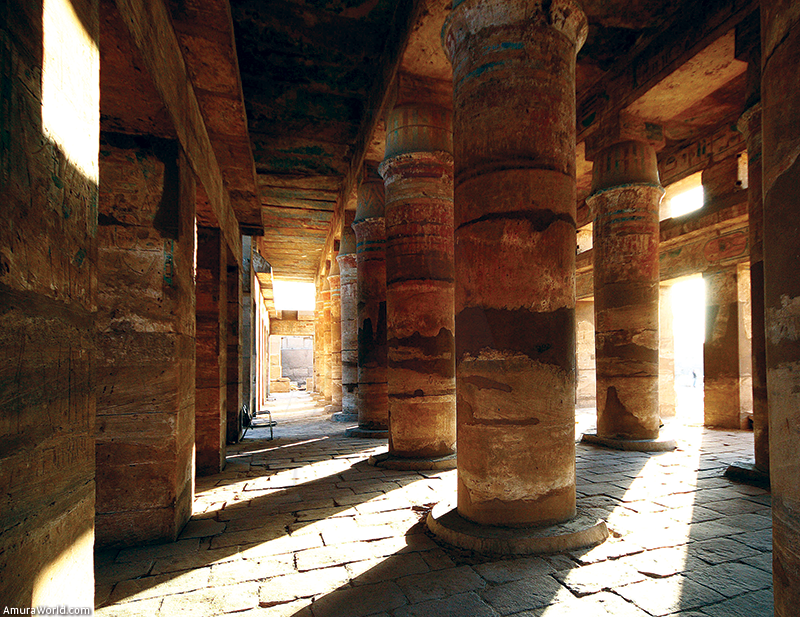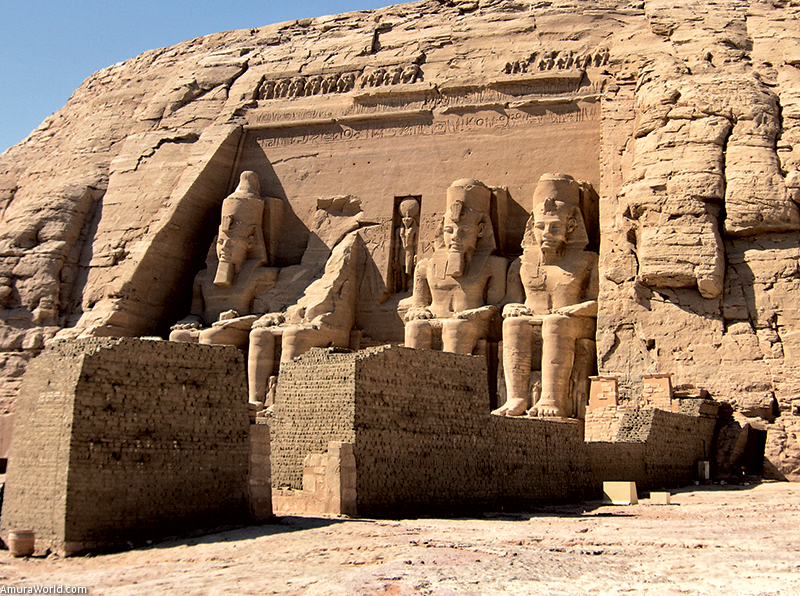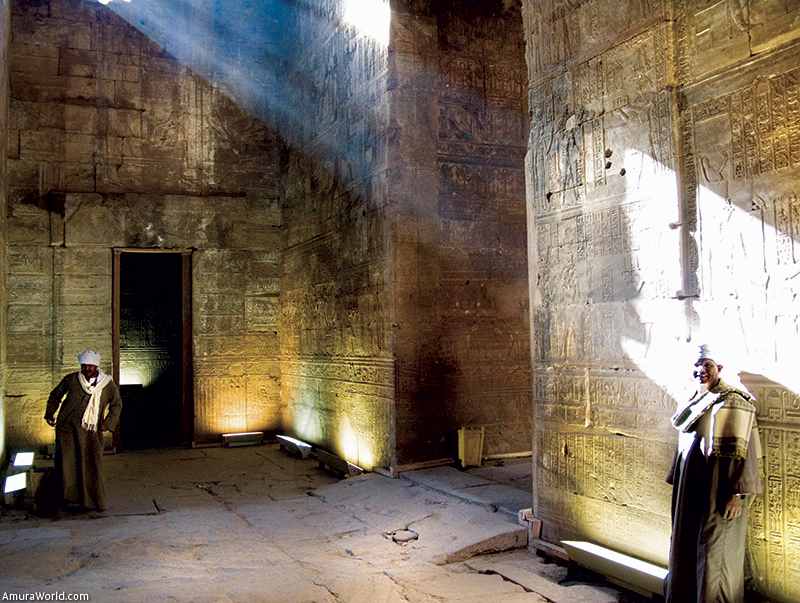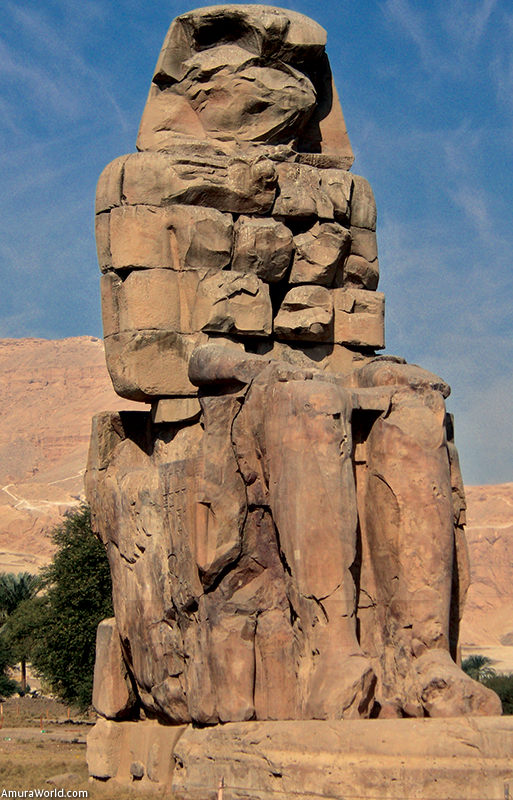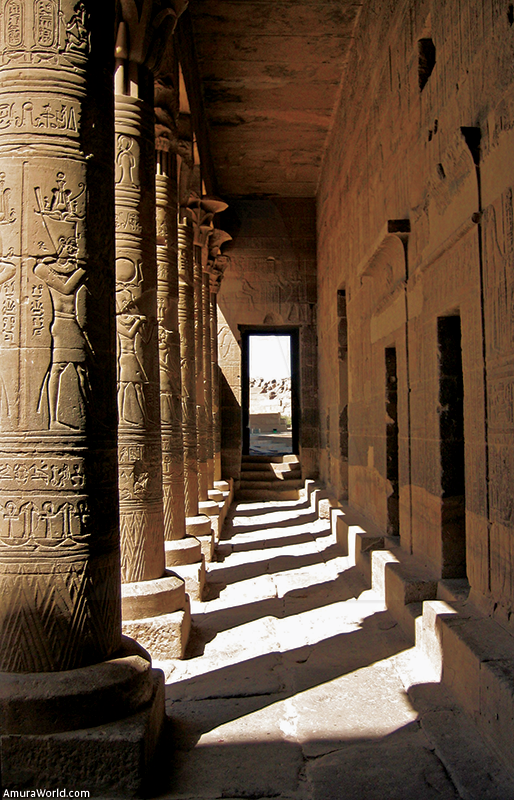Classical Historians, Roman Emperors, Arab travelers, adventurers of the best and worst sort not to mention millions of tourists have all been called by a distant voice to see this wondrous land and bare witness to the grandness of so ancient and mysterious a land. Once there, the visitor will invariably try to rummage through his or her memory and reconstruct life during the time of the Pharaohs, with their glimmering pyramids and beguiling hieroglyphs; from there one will be transported to Islamic times, with all the enticing scents of the mysterious East intertwining with the chant of the Muezzin rising to the heavens. Then it hits you that there is only one place in the world that can offer you all this: Egypt.
The Greek Historian Herodotus was wont to describe Egypt as ‘The Gift of the Nile’, thus reflecting how antiquity already held in admiration the Land of the Pharaohs, the Pyramids, the Sphinx, Thebes and the eternal river. Throughout time the Pharaohs, Greeks, Romans, Arabs, Turks and British held sway over this African nation and as a result of this heritage today’s Egypt is a co-mingling of these legacies.
Adobe-built towns grow alongside ancient ruins, surrounded by steel, stone and glass highrises. The Bedouin still live in their goatskin tents while farmers still till the earth with rustic tools handed down to them by their ancestors. In the city traditional Kaftans and risqué designer clothes mix freely whilst automobiles and donkey carts and errant goats vie for space in the crowded streets.
From Luxor to Asuan
At sunset a shimmering declining ochre sphere lends its hue to the swelling river that gave life to one of the most sophisticated and prodigious civilizations of antiquity: that of the Pharaohs, who through their exquisite architecture deigned to erect an eternal dwelling-place for themselves and their gods. As is now the yearly flooding, the river, born in Uganda and Ethiopia, brought forth life-giving greenness to the arid wastelands. In truth, it brought the promise of life to death, since never were these two companions-at-odds closer. The Pharaohs anxiously hankered for immortality; today Egypt brings us that immortality built in stone.
Who can deny that the Nile, this river of rivers, founded the nation, harnessed a unique civilization, a people that inherited for all time its greatness, best seen through the lens of its colossal architecture. Nonetheless, small detail was not forgotten: in Egypt grandness did not mean eclipsing the preciousness of its delicate contours and strokes of its art, its magnificent bas-reliefs and vivid colors.
Culture
Ancient Egypt has left us a legacy of spectacular art created within the span of three thousand years unique in its stylistic coherence. Geometric simplicity, bi-dimensional directness and strict rules regarding human proportions and portrait adornments are but some of the canon left to us.
The first Mastabas (rectangular adobe buildings containing underground royal tombs and funerary apparel) appeared during the Old Kingdom. These constructions evolved into the first stepped pyramids, such as that of King Zoser at Zaqqara, which is considered the first stone edifice of its type and foresaw the famous pyramids.
Muslim art in Egypt evolved with Arab rule. Their refined aesthetic spirit made headway with Oriental Egyptian sensibility and was quickly assimilated. Arab scripture was the primary motif used in the decoration. The beauty of their wooden sculptures was outstanding from the beginning.
Cafes are the local meeting spots around the Mosques, where men will meet every afternoon. Each locale has its particular habitués, defined either by their political or intellectual affinities. The usual banter and argument is always accompanied with Arab coffee, tea and other infusions. Of course, it would not be complete without the complementary puff from the Narguillah (water pipe) Cairo alone boasts more than 5,000 cafes.
In the larger cities one can easily assist to a belly-dancing show; it is the best way to understand the sensual nuances of traditional Egyptian music. This dance has its origins in ancient fertility rites and still occupies a very important place within Egyptian culture. Both classical Egyptian dance and music saw their fruition during the nineteenth century when they were readily made available to the general public.
Alejandria
This city, founded by the Greeks on the Nile Delta and basking on the Mediterranean hardly conserves any of its past grandeur. The remains of the Pharos, the lighthouse, were only discovered by chance in the port. The resting place of its founder, Alexander the Great, still remains a mystery. The vestiges of its Hellenic past, as well as its subsequent Roman occupation can be seen and admired in the Greco-Roman Museum in the city.
Other interesting sights are the impressive Roman Amphitheatre dating from the second century A.D., only recently discovered and containing marble seats accommodating 750 spectators. Another landmark is Pompey’s Column, erroneously attributed to this Roman hero by crusaders but in fact erected in honor of Emperor Diocletian in 295 A.D.
The Red Sea
With an area of almost 470,000 square kilometers, its waters reach such countries as Egypt, Sudan, Ethiopia, Saudi Arabia and Yemen. The Northern part is divided by the Sinai Peninsula, between the Gulfs of Suez and Aqaba. The Suez Canal connects the Red Sea with the Mediterranean. The Red Sea is renowned for its crystal-clear waters and coral reefs—a true paradise for scuba divers. Alongside these natural wonders various modern tourist complexes have been built, places ideally made for seaside vacations with all kinds of amenities. Foremost amongst these are Hurghada and Sharm-el- Sheik, all on the Southern tip of Sinai.
Nubia and Lake Nasser
With the construction of the Aswan Dam, Nubia was no more. Today Nubia exists in name only since most of its territory was submerged under the waters of Lake Nasser. Nevertheless since the 90s it has been able to be revisited through water driven tours that make the Aswan-Abu Simbel route a round trip. This route makes various stops so as to visit some of the temples that were salvaged from the waters of Lake Nasser through the construction of the Aswan Dam. Amongst these one should not forget Abu Simbel, Wadi El Sebua and El Maharraka.
The Sinai Peninsula
It is located between the Gulfs of Suez and Aqaba and is a demarcation line between the Mediterranean and the Red Sea. Most of the local inhabitants are Bedouins. Since the time of the Pharaohs Sinai was the area whence came most of their precious stones, such as turquoise, copper, gold, etc. Today Sinai’s most popular attractions lie in their pristine beaches, its towering mountains and, last but not least, the Monastery of Saint Catherine, hidden in a valley amongst its peaks.
The Western Oases
At the deepest end of Egypt’s Western desert are hidden five of the least visited oases, and yet some of the most interesting places historically speaking. From time immemorial these Wadis were used as watering holes for the caravans that headed southwards to the innermost regions of Africa. The closest oasis to Cairo is El Bahareya, some 450 kilometres away. Further south is El Wadi El Guedid that comprises the oases of El Farafra, El Dajia and El Darja. Siwa, a 1000 kilometres from Cairo is the last of these oases, close to the frontier with Libya. They are all worthy of a visit from the weatherworn adventurous spirit.
Cairo: City of a Thousand Cultures
Reckless and chaotic, labyrinthine, intensely wearing its history in the Muezzin’s evening chant, comforting as a draught of tea, beautiful and noisy—this is the Cairo that defies words. The ‘Mother of the World’ is a place to stroll and perchance lose oneself gazing at a skyline of minarets.
Cairo is the largest city in Africa, more than ten million inhabitants, and is called the ‘Heart of Islam’. It lies on the Nile Delta, a hundred and sixty kilometers from the Mediterranean and is comprised of two major centers.
Old Cairo is a walled maze of streets wending their narrow way through tented bazaars in which one can purchase any object under the sun. Having over four hundred mosques, the chant of the Muezzin wafts the sultry air. One should go with the flow and absorb the luxurious chaos.
One should also take time to visit the Egyptian Museum and, amongst many other marvels, gaze in wonder at Tutankamun’s treasure, the statue of Kefren and the goose frieze of Meidun. Other sights are the Museum of Islamic Art, the mosques of Amir, Ibn-Tulum and El-Aqmar and the churches of St. Serge and St. Barbara. Do not pass by the City of the Dead and the Citadel with its caravans and cafes.
Luxor
On the right bank of the Nile lie ancient Thebes and the jewels of Luxor and Karnak. At the latter there is a daily evening light and sound spectacle in Arab, English, French and German, telling the tale of these monuments. On the left bank are the archaeological remains of Memnon, the Valleys of the Kings and Queens and the funerary temple of Deir el-Bahari, erected in memory of Queen Hatshepsut. Further down the river are the temples of Esna, Edfu and Kom-Ombo.
Aswan
Here rises the great dam that gives name to immense Lake Nasser. On its banks lay the quarries that supplied stone to Egyptian masons. At the island Agilkia stands the temple of Philae.
Abu Simbel
Three hundred kilometers to the South, lapping the shores of Lake Nasser, Abu Simbel conserves two artistic treasures of Ancient Egypt: the temple of Ramses II and the smaller temple built in honor of his wife, Queen Nefertari, both built into the rock. The former has been fully restored and recently opened to the public, offering special lighting so as to better appreciate its murals and artistic treasures.
The Oases of Dakhla and Siwa
These oases lie deep in the Western Desert and are inhabited by Berber and Bedouin tribes. Siwa is 750 kilometres to the west of Cairo and lies amongst palms, fruit trees and fresh and saltwater springs. The locals maintain their own culture and speak ‘Siwi’.
Close by is the Oracle of Ammon where Alexander the Great went to seek advice in 331 B.C.E. The oasis of Dakhla lies in the New Valley,
an affluent of the Nile in ancient times but which is now dry. It is a beautiful and fertile area surrounded by dunes, surviving on underground springs.
Local Customs and Conduct
Egypt is a country that has been quite westernized and is comparatively liberal. The inhabitants are familiarized with tourism and thus respect the ways of its visitors. Any doubts regarding custom should be forwarded to the local tourist board.
All in all, one should do in Egypt as when in Rome. Women are thus advised not to enter a mosque wearing shorts. Should a lady visitor not have a garment to cover herself, she will be offered a complimentary cape at the entrance.
Another prerequisite in entering a mosque is to take off one’s shoes. Some mosques will offer cloth coverings so as not to have to remove one’s shoes. Nevertheless, the guide will recommend beforehand which garments are advisable to wear visiting a mosque. Egyptians are open and friendly and renowned for their hospitality.
General Information and Recommendations
Summer is dry and very hot and most transport and establishments have air conditioning.
Friday is the day of rest, such as Western Saturday or Sunday. Most places are closed yet tourist locales remain open. Most places are open on Sunday.
Egypt is a liberal and open society and hotels and restaurants will remain open during the feast of Ramadan. The sale of alcohol can present a problem but most hotels will offer it as long as it is consumed within one’s room.
Shopping offers a great variety of articles, such as cotton, silk, gold, silver, copper, alabaster, papyrus, leather, etc. Haggling over price at a market is not only custom but expected, a 40 percent decrease in price being common. It is prohibited to export antiques out of the country.
A valid passport with six months expectancy is necessary. For organized trips and tours one should do them at arrival.
Eating
A traditional meal begins with mezas, finger food salads. Corn meal is a basic staple of Egyptian food, along with French beans cooked in a plethora of styles. An entrée can be beef, mutton, chicken or fowl. Eating of pork is expressly forbidden in Islam. At the coast seafood and fish are the main delicacy. Vegetables are varied throughout the country.
Egyptians are fond of spice between courses. Perhaps Egypt’s main and best known dish is falafel, a delicious meatball spiced with long beans, herbs and sesame seeds. Other delicacies are Babaganus, an eggplant dip with Tahine and Hummus.
Typical dishes are kebabs and mechoui, brazed mutton with parsley; mutton keftas; cosari, a lentil and rice veggie-ball garnished with tomato and fried onions and accompanied by pasta; Fattah, bread layers dunked in hot broth spread with olive oil, lemon, yoghurt, cumin and boiled eggs.
Desserts are quite sweet; a delicatessen is Om Ali, a rich mixture of dunked bread in milk, nuts, coconut and raisins.
Although alcoholic beverages are discouraged in Islam, Egyptian Stella beer is quite a good brew. Coffee and sweet Chai (tea) are the national drinks.
Where to Dine in Cairo
Should you desire to go to a tourist setting, there are various places in the Avenue of the Pyramids, such as the Ramses or the Lel. Exotic dancers are to be found along the shores of the river at Maxim’s. Should one desire a more authentic ambiance it is a must to go to the Palmyra on July 18 Alley. Not much luxury but a lot of feeling.
When stopping for a cup of coffee one should be at café Fishwai, a place that has never closed its doors in 200 years. Coffee, tea and good tobacco are a staple, overseen by excellent and friendly waiters.
Abu Sir restaurant with its traditional fare and overlooking the Nile is another secret corner in the Egyptian style. Al Azahar Park and its restaurant at Salladin’s Citadel is another noteworthy place to placate esurience.
Info
Jolanda Bonazzola
Servicios Especiales de Leisure
BCD Travel
Tel: 9138 3023
This email address is being protected from spambots. You need JavaScript enabled to view it.
Text: Jolanda Bonazzola de BCD ± Photo: IMGRES • AH.

